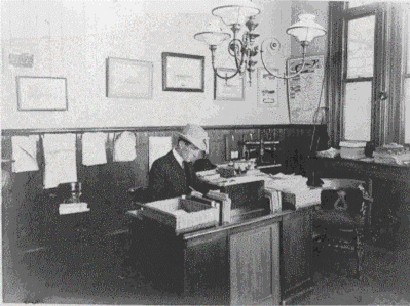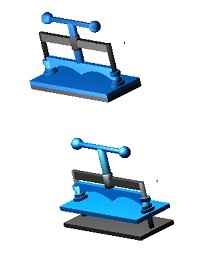THE 1950's
OFFICE EQUIPMENT
By Richard Beckett


This photo dated 1908 used to hang in a wooden frame on the wall in the office of the District Engineer at Brighton Railway Station in the 1960’s and there is one in the archives at the Newhaven museum. Recently while looking at the photo closely, I was surprised to notice a piece of equipment in the corner of the office by the window, which I had to use as part of my duties when I joined British Railways as a junior clerk in February 1952. There also used to be a similar piece of equipment in the Local Museum at Newhaven (possibly even the one shown in this photograph). It is a press made of cast iron, which was used to produce copies of documents, and even as late as 1952 when I joined the Railway, it was still common practice to use “Copying Ink” when writing documents which might need to be copied. By using this type of ink, any handwritten document could be made to produce an exact copy of what was written and in my case I used to have to make copies of Correspondence, Invoices and paybills. However I must point out that within a year of my initiation into this archaic method of reproduction, it had been replaced by the use of carbon paper. Using the piece of equipment identified in this photograph, a copy of the original could be produced on a special sheet of paper, using a damp cloth and two waxed sheets of card. These would placed in the press in a specific order i.e. (1) Waxed Card (2) Damp Cloth (3) Blank Paper to receive copy (4) Document to be copied (face up) (5) Waxed Card. Then once the above were in place, the handle of the press was rotated which screwed the top block down to compress the constituents together so that the copying ink became dampened and a copy of the text etc would be re-produced on the recipient paper.